INTRODUCTION
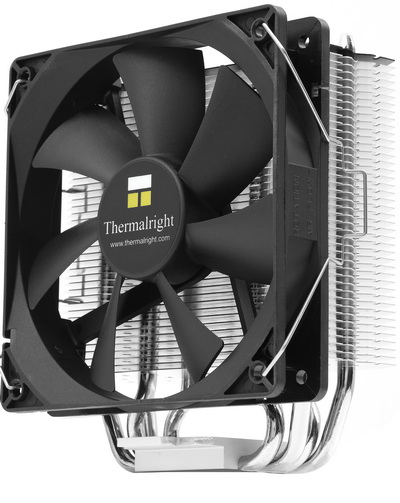
Consumers who are after high cooling efficiency for their systems currently have three valid products to choose from such as tower CPU air coolers with large heatsinks and at least two fans in push and pull configuration, dual and tri-fan AIO liquid CPU coolers and custom water cooling loops. However it goes without saying that most consumers are not really looking for top-notch cooling efficiency but rather easy/fast installation and zero clearance issues with mainboard and system components and because of that the majority of CPU air cooler models in the market feature medium sized heatsinks paired with a single fan. Thermalright has always catered to the needs of both casual users and enthusiasts and today we're taking a look at their latest model aimed towards the former the True Spirit 120 Direct CPU Air Cooler.
Thermalright is an elite design house that manufactures cooling products for computer components for the best quality and performance your money can buy. In 2002, AMD released its first generation Thunderbird CPU and since then we have been there every step of the way to counter high voltage and high heat with innovative design and highly acclaimed cooling solutions not only for AMD but for Intel as well. One of early well known solutions was the SK-6. With many positive and rave reviews under its belt Thermalright bolted to the top as the heat sink manufacturer mostly preferred by Overclockers and enthusiasts around the World. To this day, innovation never left our vocabulary as we keep coming up with leading edge designs staying ahead of the competition.
A few months back Thermalright released the True Spirit 140 Direct CPU Air Cooler and although it didn't smash our charts it did offer very good cooling efficiency for its size (also thanks to the somewhat large 140mm PWM fan). The True Spirit 120 Direct is aimed towards users who want something even smaller since the 360g heavy heatsink used measures just 120mm in length, 141.35mm in height and 41.96mm in width (as opposed to the 650g heavy and 140x161.48x42mm of the heatsink used in the True Spirit 140 Direct). Thermalright has also used an smaller 120mm PWM fan with the Spirit 120 Direct (as the name clearly states) which is not nearly as powerful as the 140mm PWM model of the True Spirit 140 Direct (1300RPM/46.19CFM/25.4dBA vs 1300RPM/73.6CFM/21dBA). Using a smaller fan with the same RPM to keep noise levels to a minimum automatically means you need to compromise in airflow levels and static pressure so i was honestly expecting something slightly faster (Thermalright however obviously placed low noise levels - and height - before performance). Finally the True Spirit 120 Direct features a total of 4 nickel plated 6mm copper heatpipes as opposed to the 5 found in the True Spirit 140 Direct. So let's move forward with today’s review and see just how good the brand new True Spirit 120 Direct is especially compared to his taller brother.
SPECIFICATIONS AND FEATURES
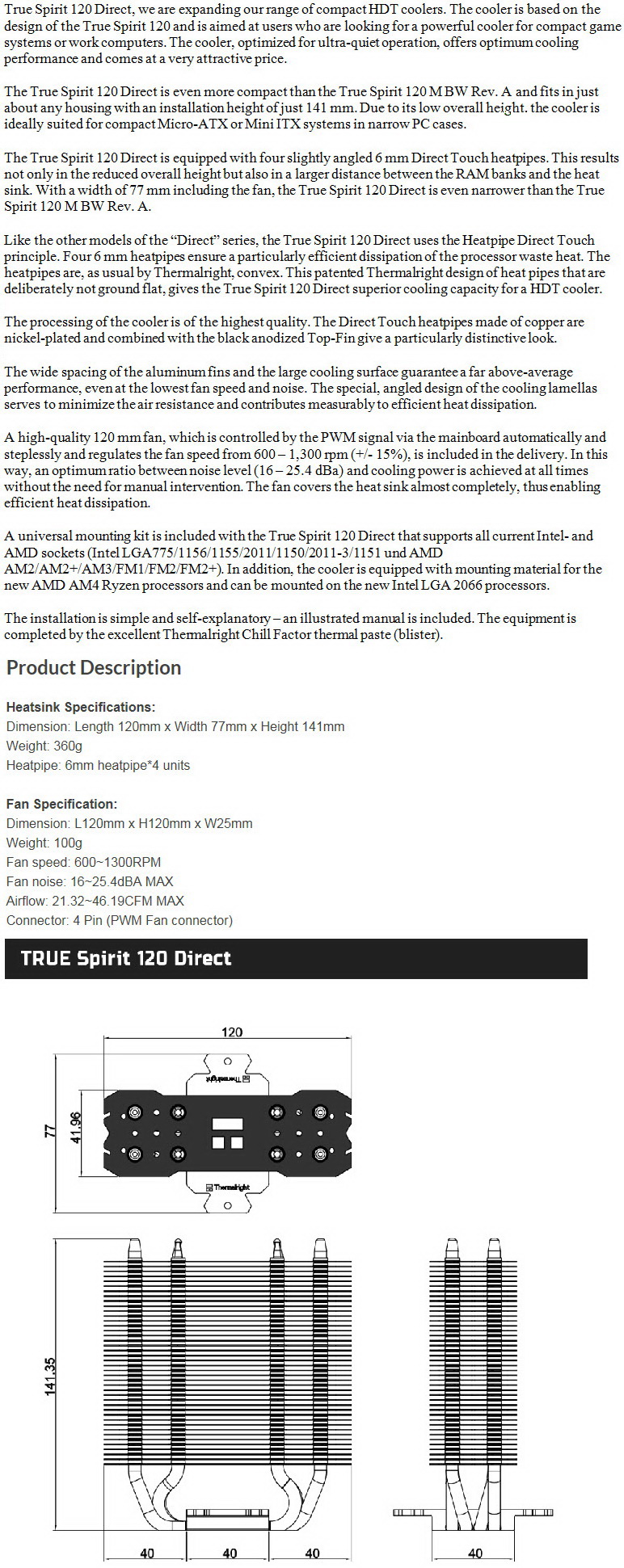
PACKAGING AND CONTENTS
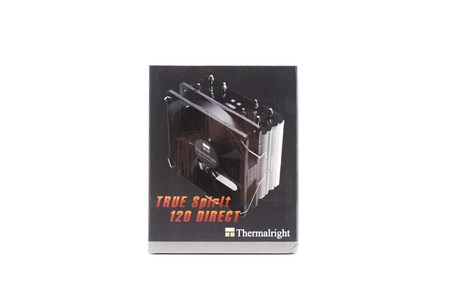
Just like with the 140 model a large product picture takes most of the front of the box.
 The product features are all showcased on the right side with the help of several drawings while on the right side we see a picture of the H.D.T (heatpipe direct touch) base.
The product features are all showcased on the right side with the help of several drawings while on the right side we see a picture of the H.D.T (heatpipe direct touch) base.
Thermalright has placed the product specifications in three languages at the rear of the box.
Two pieces of foam protect the heatsink and fan while the rest of the bundle is placed in a small cardboard box.
Aside the heatsink of the TRUE Spirit 120 Direct Thermalright also ships the TY-1218 120mm PWM fan, 4 fan mounting clips (you can use a 2nd fan in push and pull), 8 round rubber fan pads, pouch of thermal conductive material, installation instructions and mounting hardware for Intel LGA775/1150/1151/1155/1156/1366/2011/2011-3/2066 and AMD AM2/AM2+/AM3/AM3+/FM1/FM2/FM2+/AM4 mainboards.
THE TRUE SPIRIT 120 DIRECT
The 360g heavy heatsink used with the True Spirit 120 Direct is 120mm long, 41.96mm wide and 141.35mm tall.
Thermalright has cut their logo on all available aluminum fins as seen above.
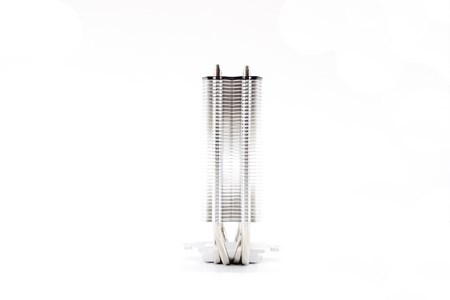 This heatsink features a total of 42 aluminum fins not bend on their sides.
This heatsink features a total of 42 aluminum fins not bend on their sides.
Typically Thermalright has placed their genuine product seal ontop of the base.
A total of 4 nickel plated 6mm copper heatpipes start from the H.D.T base and pass through all 42 aluminum fins.
The H.D.T base has quite a few visible machine marks but then again so do all we've seen to date.
The 120mm PWM fan is the TY-1218 model and can reach speeds of up to 1300RPM (+-15%) to produce airflow levels of up to 46.19CFM with up to 25.4dBA of noise.
With the fan mounted the True Spirit 120 Direct now measures a total of 67mm in width.
TEST BED
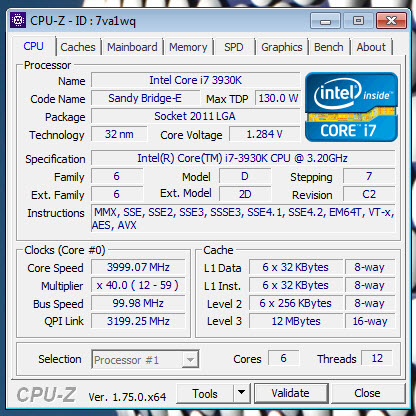

TESTING METHODOLOGY
We always take things quite seriously when it comes to work so just like with the previous LGA1366 database we will not be testing each CPU Cooler on its own and with different ambient temperature levels and thus we can actually have yet another valid CPU Cooler database. Testing a CPU Cooler automatically means that you need to know where it stands against the immediate competition and to accomplish that we have spent both money and time through the years, something that we plan to continue to do so in order to get the most accurate results for the end consumers who read these lines. Every CPU cooler in this database is tested with the bundled 140mm/120mm/92mm/80mm fans while working at both idle speed and 100% of their speeds for all the temperature tests. CPU Coolers that do not come bundled with a fan/s are measured using a Noctua fan (size dependent on the model) to test for the temperature tests but due to the lack of a stock fan dBA level tests are obviously skipped. Single (120/140mm) watercooling solutions are tested with the radiator mounted at the rear of our test rig while dual/triple/quad (240/260/280/360/420/480/560mm) solutions with the radiator mounted at the top. For the dBA tests every cooler in the database was measured both while on idle mode or with the fan controller in the minimum setting and while on extreme load or with the fan controller all the way to the highest possible setting (PWM fans do that on their own without our intervention). Every single test takes place in a temperature controlled room of 23 degrees Celsius Ambient Temp with the help of two AC units placed diagonally inside the room. The Arctic Silver 5 thermal paste is used with every CPU Cooler in our latest LGA2011 database (although initially this was not the plan we had to change things to get the most accurate results). Finally it's very important to point out that just because a CPU Cooler is better than another when tested with our test rig that does not necessarily mean that the same performance differences will apply 100% for other CPU models and in other situations (such as different ambient temps and system configurations).
To successfully record the load temperatures we use the latest OCCT application for around 6-10 minutes to push the processor to its limits and after that is done and the temperatures are recorded we wait for about 10-20 minutes for the CPU to cool down and record the idle temperatures. This is done to allow time for the thermal conductive material to achieve the optimal performance level. Same procedure is then repeated with the Passmark BurnIn Test as a failsafe just in case the OCCT results are wrong. This procedure takes a lot more time than the usual peltier/thermometer tests but this way not only can we deliver real world results to our readers based on real CPUs but we can also triple check the results using a variety of programs. Last but not least the temperatures were recorded using both the latest versions of AIDA64 and RealTemp while the noise level tests are performed using a high precision ExTech HD600 Decibel Meter placed about 10-15cm above the CPU Cooler. Still although the same testing procedure applies to all units do take into consideration that unlike the official numbers which are measured in special noise isolated labs with just the fans here we also have both the rest of the cooler and the rest of the system (although all system fans are turned off when recording noise levels).
TEST RESULTS


CONCLUSION
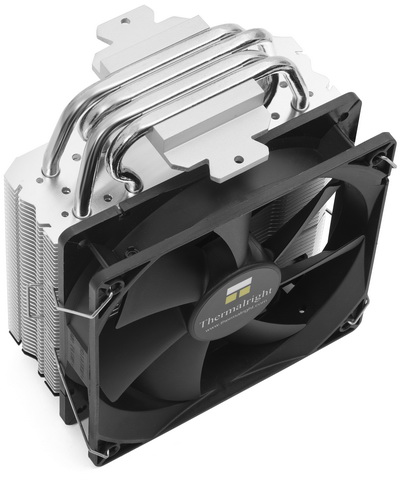
When we received the True Spirit 120 Direct CPU Cooler and compared it to the True Spirit 140 Direct it became clear that Thermalright just wanted to release a shorter model for use in compact PC cases for which the 2nd might just be too tall for. With that in mind performance obviously comes second and so the True Spirit 140 Direct surpassed the 120 model by almost 3 full degrees Celsius. Now the good news is that we were expecting an even larger difference and since noise levels are almost identical between both models (again we were expecting a larger difference) performance-wise the True Spirit 120 Direct did quite well.
Unfortunately as I type these lines the TRUE Spirit 120 Direct may not be available in the USA but it’s widely available in the EU with a price tag of 33.99Euros (PC-Cooling.de). This puts the TRUE Spirit 120 Direct roughly 6Euros beneath the 140 model so if your PC case has sufficient space for the latter we really see no reason to pick the former. Overall the TRUE Spirit 120 Direct may not offer the best cooling efficiency around but thanks to its height, zero clearance issues and low noise levels it’s worth checking out if you own a compact PC case.
PROS
- Good Build Quality
- Good Cooling Performance
- Size (No Clearance Issues)
- Low Noise Levels
- Price (For Some)
CONS
- Current Availability (USA)

 O-Sense
O-Sense








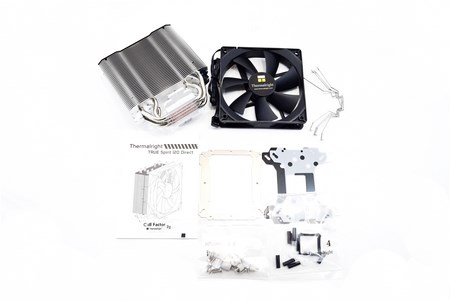
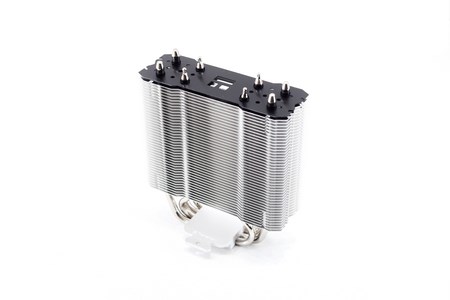




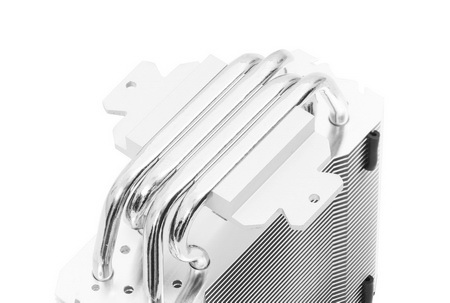




.png)

